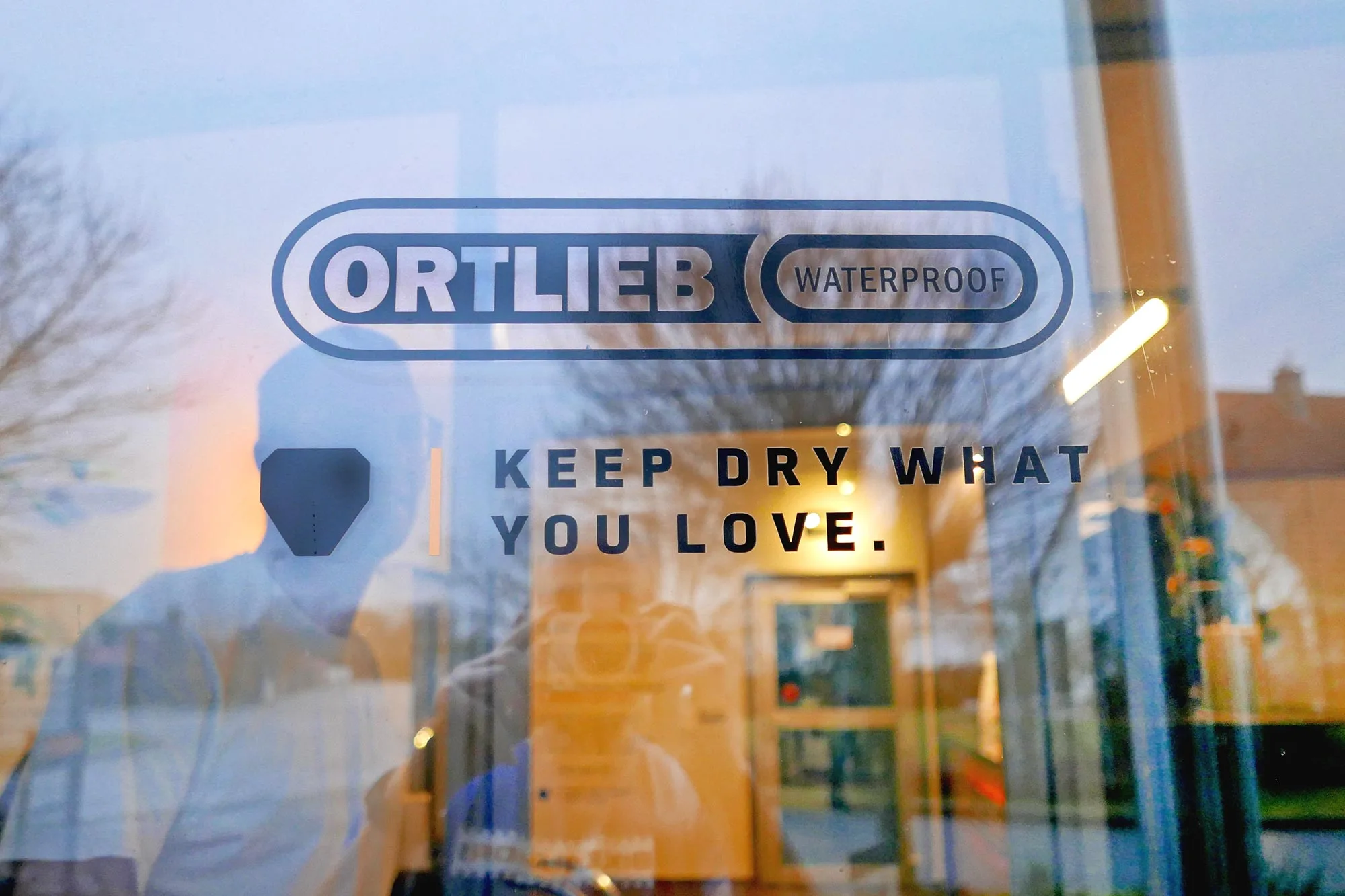Last winter we were invited to take a rare look inside the Ortlieb factory, where the company synonymous with ‘waterproof’ manufactures their classic touring, commuter, and bikepacking bags. Nestled in the rolling rural countryside of northern Bavaria, Ortlieb makes its signature waterproof cycling bags in Germany. For over 40 years they’ve built a reputation for quality, durability, and reliability. And while they’ve expanded their offerings far beyond their original waterproof touring luggage and those original designs, Ortlieb even continues to refine and evolve those classic bags that are still some of their best sellers…
Inside Ortlieb, behind the scenes where waterproof is made
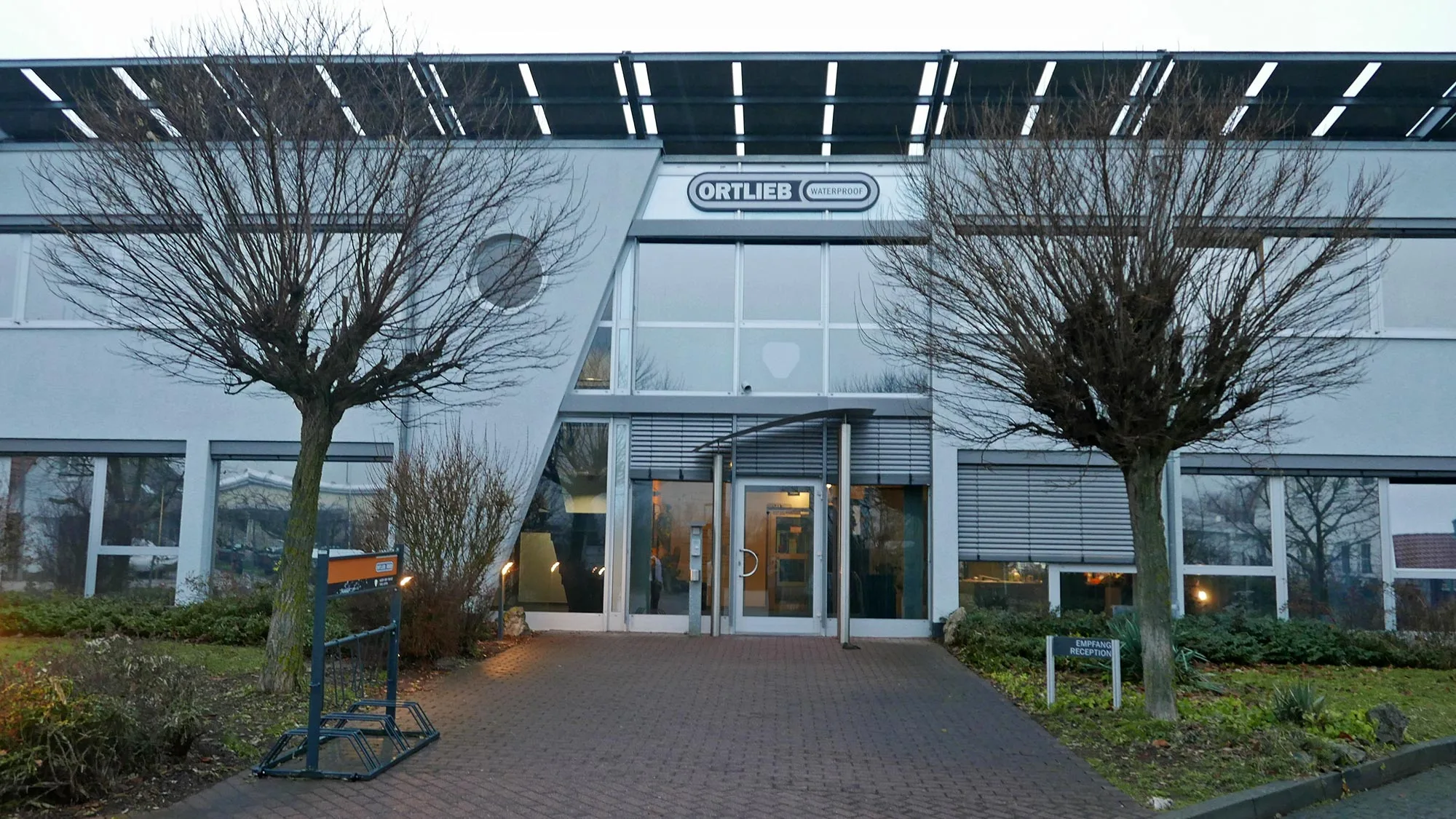
During a less busy, but appropriately rainy part of the year, we had a chance to venture across Germany to the headquarters of Ortlieb in Heilsbronn in the Franconia region. Quite centrally located in Germany – and technically at the geographical center of the EU – it’s an easy locale to overlook. But it’s a nice, quiet part of the German countryside. And sufficiently wet for their style of gear, at least based on my winter visit.
He started the company back in 1982 in Nuremberg, but Hartmut Ortlieb brought it half an hour down the road to this new location in 1997 to set up a more efficient, more sustainable way of manufacturing their iconic waterproof gear. That’s where more than 300 international employees design and make your bags, and create all of their growing range of gear – beyond touring & bikepacking bags to include multiple racks, thru-axles & more…
All of the waterproof bags are created in-house in Heilsbronn. Their specialized waterproof zippers are made by a partner company Tizip, literally created on the same street just to make zips to Ortlieb’s high waterproof standards the year after they moved to Heilsbronn. All the injection molded plastic parts in your Ortlieb gear are also made on the same tiny dead-end street. Ortlieb built up the industry on the edge of this small, to the point that their partners literally can pull a forklift out of one factory and drop it off next door, for the most easy-to-mange supply chain logistics you’ll find anywhere.
Where Ortlieb waterproof started, and where they’ve gone

Ortlieb got its mythical start in 1982 when founder Harmut Ortlieb wasn’t satisfied with the lack of protection from the elements with touring bags of the time. On a cycle tour of the UK, he realized that the tarps covering truckers’ hauls would make better bags than the axed cotton or uncoated nylons of the day. So he returned home and started experimenting with tarpaulin fabric and his mother’s sewing machine.
He started with taped seams, that were nearly “leakproof”. But that wasn’t good enough. Within about 2 years, Harmut settled on high-frequency welding tech to physically bond two pieces of coated fabric together – creating truly waterproof gear. That’s still the core technology that sets Ortlieb apart today – although it has become much more sophisticated and refined.

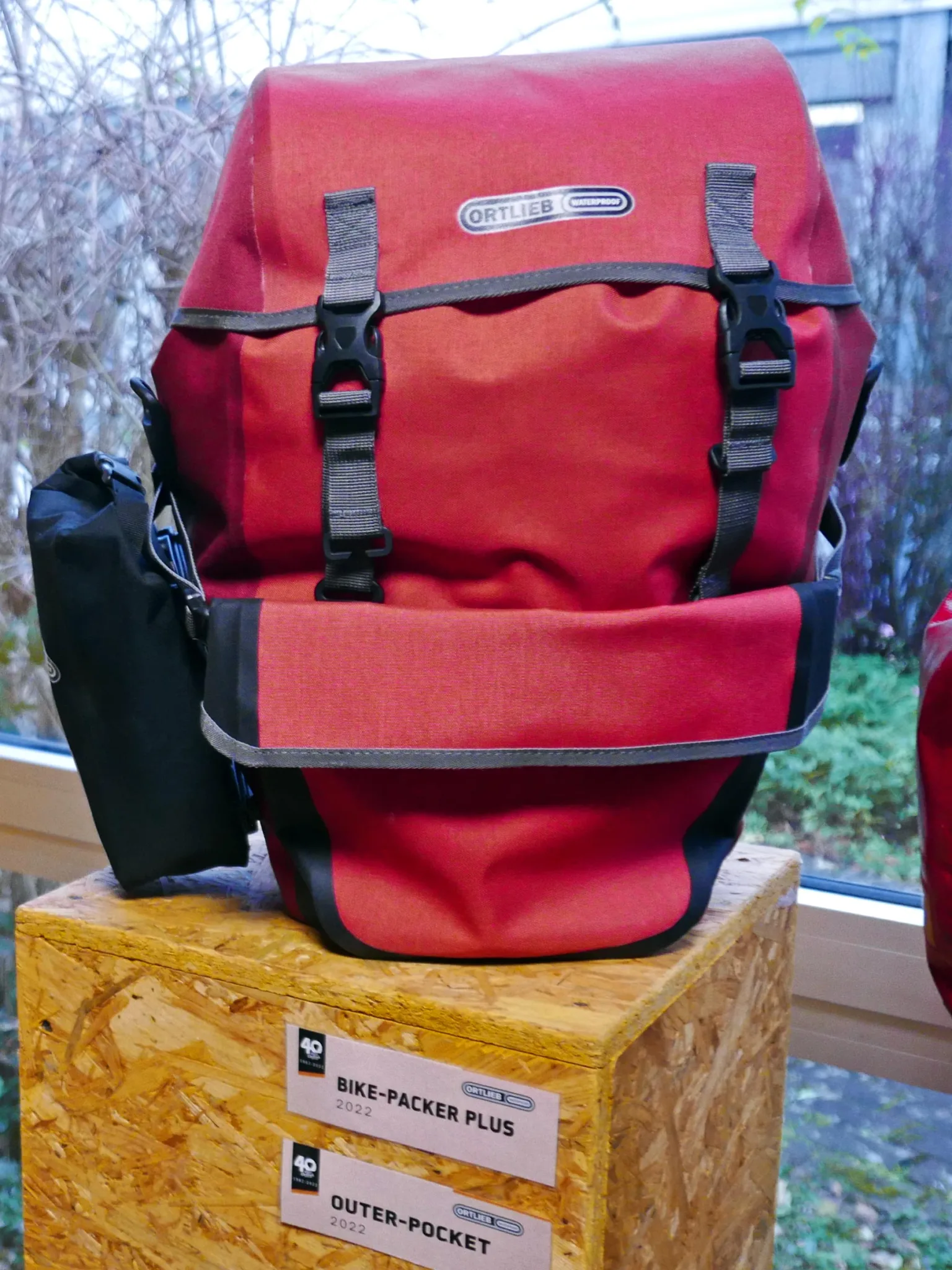
It all started with Ortlieb’s first tarp-based and seam-taped Bike-Packer pannier bags. 40 years later, the general pannier bag profile is similar, even down to the 2-strap closure, and the iconic red. But the materials of the modern Bike-Packer Plus are much more refined. And the high-frequency welded seams are unmatched for their consistent waterproofness and durability.
Behind-the-scenes in waterproof cycling bag production

To make all their high-performance bags, Ortlieb has to start with high-quality materials. Their fabrics are all provided by long-term trusted suppliers. And Ortlieb keeps plenty of rolls in stock, in all of their favorite colors, to maintain reliable workflow.

It’s not only the classic coated nylon & polyester fabrics, more complex construction includes various foams, foils, and other plastics that give Ortlieb’s products a wide range of applications. And all of them need to be sorted, prepped, and stored to be ready for Ortlieb’s flexible manufacturing.
In-house material testing
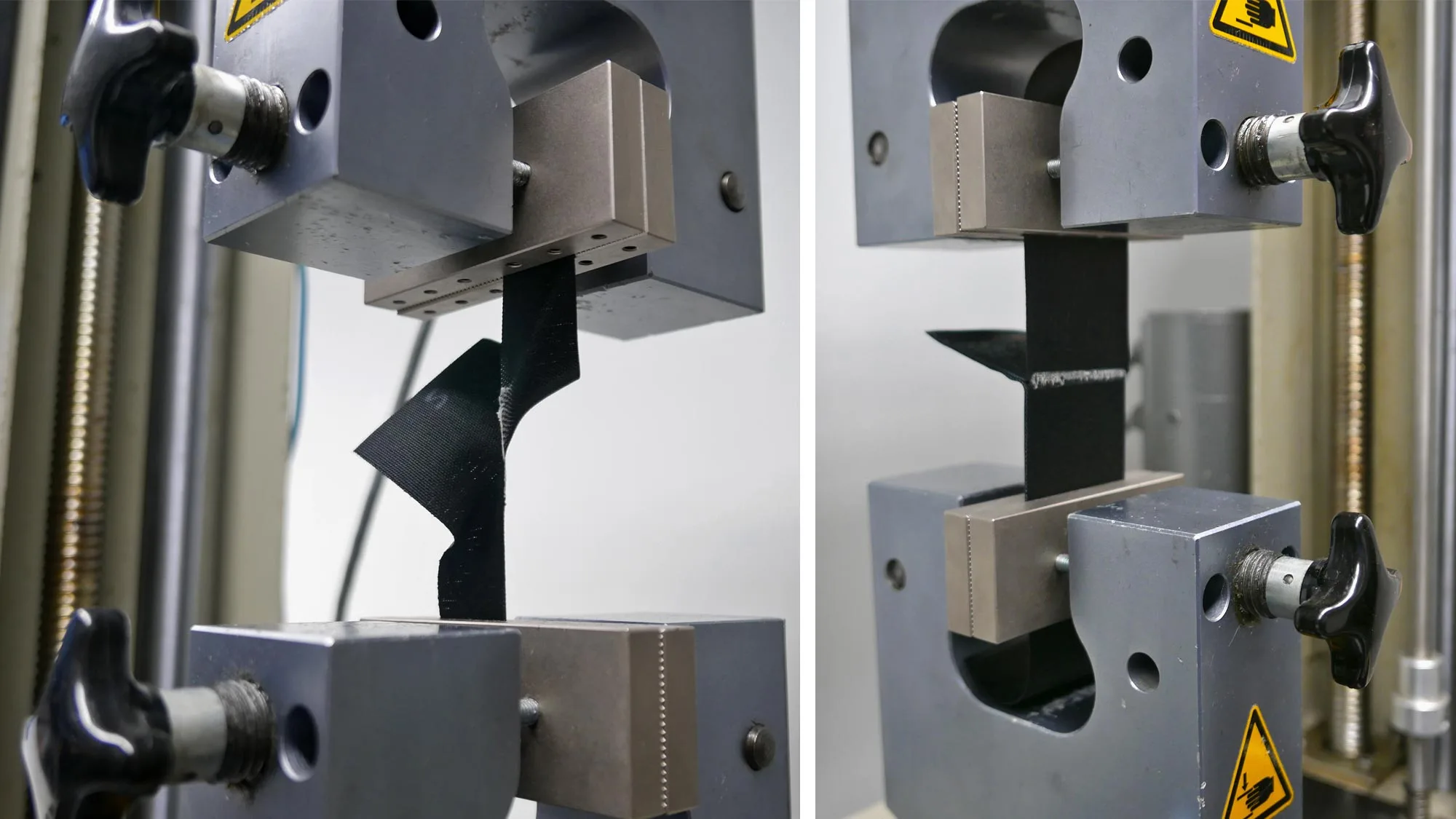
But trusted suppliers or not, Ortlieb doesn’t leave anything to chance. It’s their waterproof reputation on the line, after all.
So every batch of fabric coming in the door gets tested in-house. Tear resistance, ultimate tensile strength, ability to be welded together, abrasion resistance, waterproofness. Much like in their manufacturing hall, Ortlieb makes many of their own testing tools to determine the performance of their raw materials.

And if the fabric doesn’t pass any of Ortlieb’s in-house tests, it doesn’t make it into any production bags.
Material cutting & prep

Over 40 years, many steps of the manufacturing of Ortlieb’s iconic bags have evolved and become more efficient. That’s a big reason that they can continue to manufacture in Germany. While their products are by no means the cheapest on the market, customers continue to respect the added value of high-quality, durable gear that Ortlieb stands behind.
Water jet cutting lets Ortlieb accurately cut many layers of material at a time, speeding up the prep process for their higher volume bags.

But their classic stamping dies still see regular use too. For lower volume or thicker foam materials, often times the classic die-cutting process is still the best solution. And Ortlieb has a veritable library of dies to stamp out all shapes & sizes of their broad catalog of cycling-specific bags and more general application packs.

One of the games that the Ortlieb team likes to play with the uninitiated is “Guess what bag this is?”
Many are pretty easy to figure out if you are familiar with their core cycling bags. But can anyone guess which bag these yellow pieces belong to? Let us know in the comments!
What’s in the Bike Bag box?

Now, let’s dive into the birth of a single bag (or at least a single family of bags).
The Ortlieb guessing game continues. What ‘Bike Bag’ in in the box?

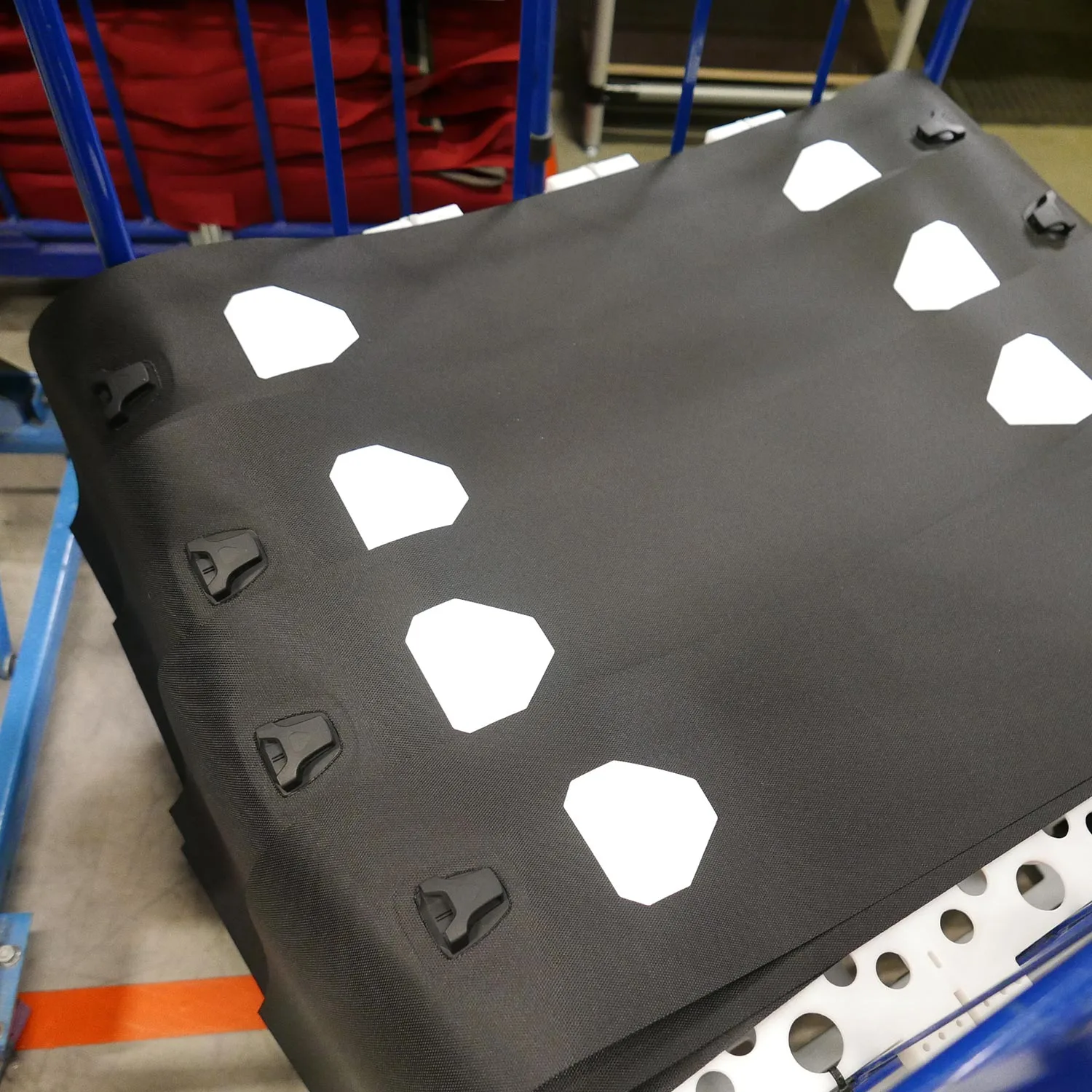
At various stages in the manufacturing process, Ortlieb water jet cuts (or die cuts) the individual panels that make up a bag. Then, they print or heat-transfer the graphics onto the individual panels – hi-viz reflective here. Then, they may weld on hardware like these side buckles.
Before…
The next mystery step.
Herein lies the secrets…
Ortlieb was careful not to really show us how they use their unique & patented high-frequency welding tech to bond the individual panels of their bags together. It’s literally the secret sauce that sets them apart from the competition.
I did get to see some interesting-looking, custom-made welding machines that were dormant during my time in the factory. Each was created for a specific product, like you might see with a carbon wheel or frame mold. And the general idea seems to be that these machines were developed to concentrate the high-frequency energy exclusively at the specific bag’s seams, so these are melted together, but nothing else is affected.
Interesting to note without know more about how the process works, there were warning signs everywhere so that someone with a pacemaker didn’t accidentally stray into the path of an Ortlieb waterproof bag welding machine in-process.
Consider yourself warned.
Back to conventional bag assembly…

Once Ortlieb mysteriously uses a magic microwave to bond your bag’s panels together in a waterproof construction, there’s still plenty more manual work to be done.
Skilled workers sew on finishing tape, and the special thin piece of stiffening plastic that makes their roll-top closure work so well.
Remember, Ortlieb actually is the inventor of the waterproof roll-top closure. And you must fold it a full 3 times for Ortlieb to be sure that it is truly waterproof. At least protected from 1m submersion in water for a full 30 minutes. In reality, most Ortlieb waterproof bags deliver significantly more protection than that.

After welding and that last sewing step, these bags finally resemble something that we can easily identify.

At that point, teams of two work together to finish the Ortlieb bags. They bolt on specialist hardware – like the QL2.1 quick-release rack attachment system here. And they add any remaining straps, hooks, and buckles before the complete bags get boxed up to send to the warehouse for distribution.

Did you guess which bags we were seeing be made?
The unfinished side panels were from this (potentially red) Ortlieb Back-Roller Core pannier bag. And the slightly closer to being finished petrol blue bags were these classic and slightly more complex Back-Roller panniers.
Factory seconds find a 2nd life

One casualty of Ortlieb’s insistence on absolute waterproofness and exacting quality control is that not every bag they start working on ends up passing all their internal checks.
But turning lemons into lemonade, Ortlieb puts their factory seconds aside, and then gives them a second life – here as high-quality, but not waterproof reusable shopping bags. Their dealers can place orders for as many as they want, but no choice on color, since they are only made with whatever doesn’t pass internal quality controls.
Fix It, Don’t Replace It!
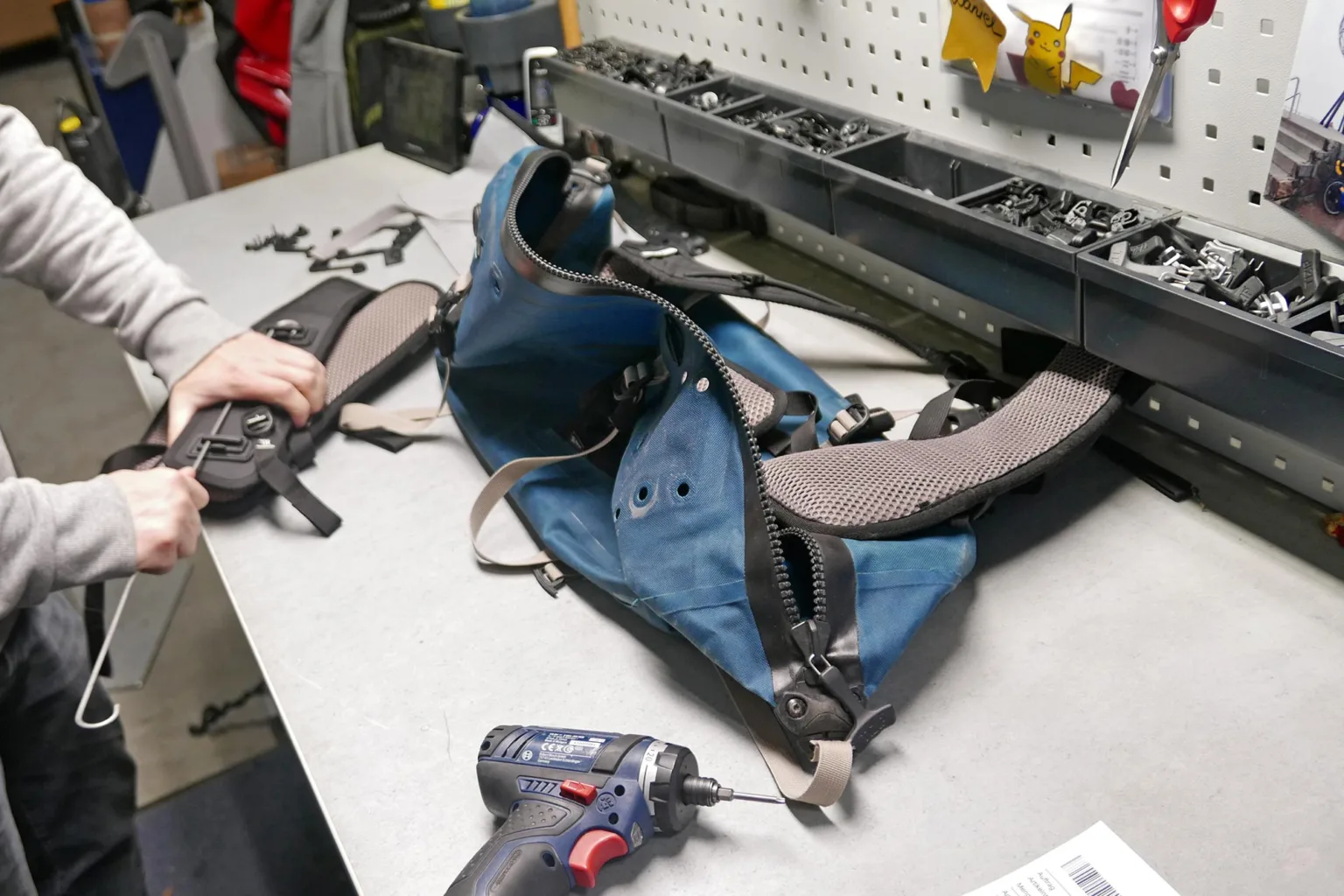

That was the tagline of an Ortlieb Repair Week campaign last year as a response to industry Black Friday deals. But it’s more than just a slogan. Ortlieb offers a 5-year warranty on every product they make. But they also encourage buyers to use their gear long past that.
A big part of keeping their existing gear in service is an affordable repair program, and availability of spare parts. Ortlieb trains a huge portion of their dealers & distributors in more basic and the most common repairs, and even sets up a number of them for more complex repairs.
And if you can’t get someone local to fix your gear, Ortlieb sends it back to Heilsbronn where it was made. Off in one corner is the factory, we found a well-equipped repair technician. And he picked out what he was working on that day, everything from replacing damaged hardware to showing us how he uses a special heat gun & roller to weld patches over damaged packs to make them fully waterproof again.
Then stack it up, and ship it out

Ortlieb makes all of their waterproof touring, commuting, bikepacking, and off-bike bags in-house in Germany.
But even those newer items like tubular aluminum racks and modular thru-axles that are not manufactured in Heilsbronn, they all still end up here in the Ortlieb warehouse to get shipped out to global distributors and your local dealer bike shops.
A case in point Review: Why Ortlieb cycling bags are waterproof!

One last thing…
While visiting Ortlieb in Heilsbronn, it seemed like it would be a shame to not load up some bikes to get wet & muddy. You know, to see what waterproof cycling packs were all about.
For a quick 2-day bikepacking overnighter, I loaded up the 3T Extrema Italia test bike with my set of limited edition purple, petrol & orange Ortlieb bikepacking bags stuffed with plenty of gear to stay warm and dry this past winter. And of course, heavy rain was forecast, and the gravel route was more dirt farm tracks and singletrack, so I broke out the Maxxis Severe 29er XC mud tires for as much grip as I could muster up.
My Ass Savers Win Wing was no match for the sloppy wet German mud, although I think it did actually keep my legs a bit cleaner and drier.
So did everything stay dry?

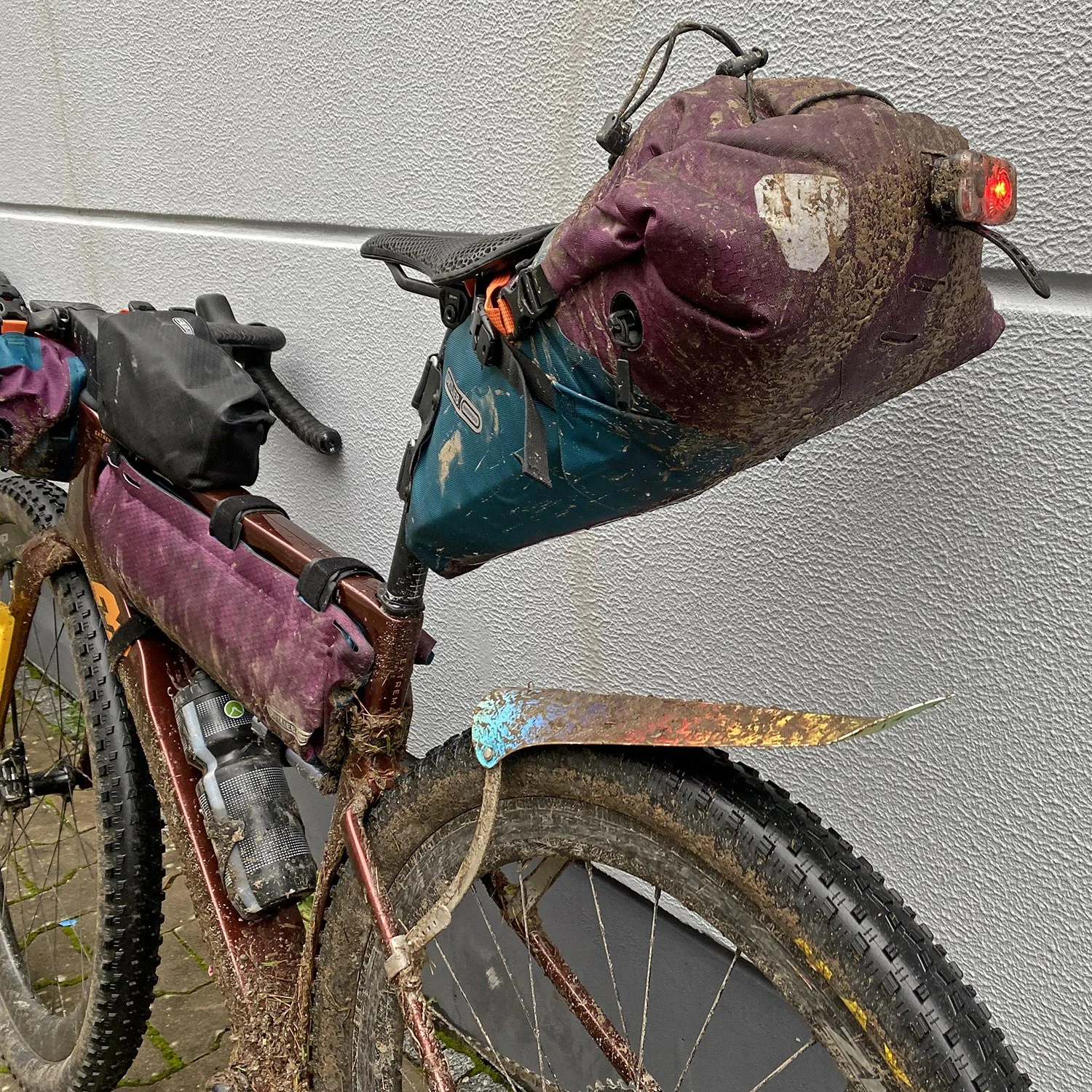
Of course it stayed dry.
Well, at least everything inside of my Ortlieb waterproof bikepacking bags.
The first trick with riding gravel bikes in rain and mud is finding a place out of the rain when it’s time to load and unload your bags. The second is trying to keep the bags clean of mud before you have to open, or close them again.
The Seat Pack saddlebag is the hardest to deal with keeping clean, so I try to limit how often I need to get into that one – usually saving that for the end of the ride at camp. The Handlebar Pack doesn’t get as mucked up at its openings, but the end openings are generally tricky to open, then close again tightly while still on the bike. So they’re not exclusively for camp, too.
The roll-closure Frame-Pack Top Tube RC is my go-to for extra layers, tools, and bigger snacks that come out mid-ride. It’s easy to get into with a gaping wide opening, and doesn’t get dirty mid-ride.
Then lastly, this magnet snap-closure toptube Fuel Pack is excellent for smaller snacks, and to keep your phone and powerbank dry in a deluge. One-handed easy access, and it still keeps rain out. Just don’t dunk it in a lake, as it’s not immersion-proof like the rest of the Ortlieb bags are.
Ortlieb waterproof will keep dry what you love

Yes, I’m fully onboard with the “Keep Dry What You Love” mantra. Plus, I love that Ortlieb builds these bags to last. And Ortlieb backs them with repair service to keep them in use for as long as you want to keep the riding your bike on new adventures.
Now truth be told, I have already spent many hundreds of kilometers with my gear protected from the elements inside Ortlieb waterproof bikepacking bags. And I even rode to the train station in the rain this morning with my weekend’s worth of gear safely tucked away inside of Vario convertible pannier/backpack attached to a Quick-Rack Light.
So, I already knew these colorful bikepacking bags would keep my goodies dry.

But you can’t blame me for taking an opportunity to go play in the mud & rain with Ortlieb’s head of communications.
It was great to see inside Ortlieb how they manufacture these bags in Germany. But the trip was even better by taking my well-used bags back to their birthplace. And then, inundating the bags with truly the same rain and mud that Ortlieb created them to protect your gear from in the first place, for the past 42 years.
